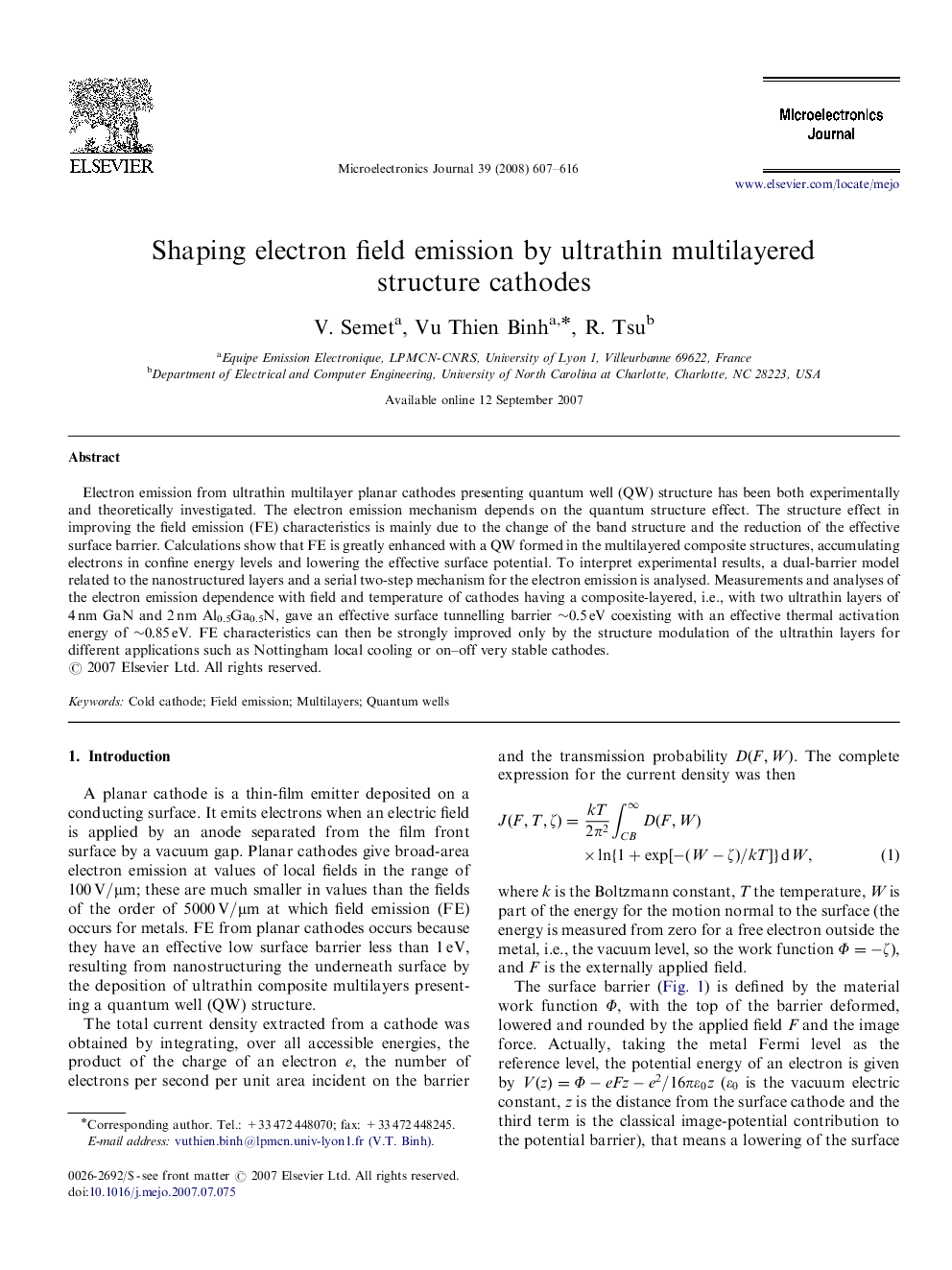| Article ID | Journal | Published Year | Pages | File Type |
|---|---|---|---|---|
| 546577 | Microelectronics Journal | 2008 | 10 Pages |
Electron emission from ultrathin multilayer planar cathodes presenting quantum well (QW) structure has been both experimentally and theoretically investigated. The electron emission mechanism depends on the quantum structure effect. The structure effect in improving the field emission (FE) characteristics is mainly due to the change of the band structure and the reduction of the effective surface barrier. Calculations show that FE is greatly enhanced with a QW formed in the multilayered composite structures, accumulating electrons in confine energy levels and lowering the effective surface potential. To interpret experimental results, a dual-barrier model related to the nanostructured layers and a serial two-step mechanism for the electron emission is analysed. Measurements and analyses of the electron emission dependence with field and temperature of cathodes having a composite-layered, i.e., with two ultrathin layers of 4 nm GaN and 2 nm Al0.5Ga0.5N, gave an effective surface tunnelling barrier ∼0.5eV coexisting with an effective thermal activation energy of ∼0.85eV. FE characteristics can then be strongly improved only by the structure modulation of the ultrathin layers for different applications such as Nottingham local cooling or on–off very stable cathodes.
